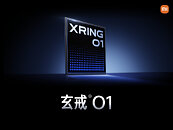Ocypus Announces Sigma PRO Series Liquid Cooler
Ocypus proudly announces the debut of the Sigma PRO Series, a new generation of high-performance liquid coolers with minimalist design. Featuring a flagship 3.5-inch IPS display, innovative floating pump design, and an ultra-large copper base for unmatched heat dissipation, Sigma PRO is built to deliver exceptional thermal performance with aesthetics.
Flagship Screen, Brilliant Visual
At the heart of the Sigma PRO is a stunning 3.5-inch square IPS screen with 640×480 resolution and an ultra-narrow bezel, delivering sharp visuals for real-time system monitoring. The customizable screen supports videos, images, and GIFs—giving users full freedom to showcase system stats or personal style right on the pump.
Flagship Screen, Brilliant Visual
At the heart of the Sigma PRO is a stunning 3.5-inch square IPS screen with 640×480 resolution and an ultra-narrow bezel, delivering sharp visuals for real-time system monitoring. The customizable screen supports videos, images, and GIFs—giving users full freedom to showcase system stats or personal style right on the pump.




























































































